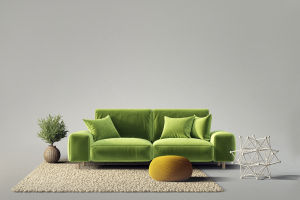In modern restaurant design, minimalist chairs are not just an aesthetic choice but a pursuit of both functionality and beauty.
These chairs are becoming increasingly popular in contemporary dining spaces, not only for their visual clarity but also for their practical value and space efficiency.
This article explores the key features of minimalist chairs, material choices, and how they integrate with the overall design of modern restaurants.
Key Features
Minimalist chairs typically possess the following key features:
1. Simple Silhouettes: The contours of minimalist chairs are often very straightforward, avoiding complex curves and decorations, and emphasizing straight lines and basic geometric shapes. For example, common designs include straight-backed chairs and seats that highlight a balance between functionality and comfort.
2. Functionality First: The focus of these chairs is on functionality. They are usually designed with ergonomics in mind, offering a good sitting experience while maintaining a minimalist aesthetic.
3. Neutral Colors: Minimalist chairs often use neutral colors such as white, black, gray, or natural wood tones. These colors not only blend easily with various décor styles but also maintain a visually clean space.
Material Choices
The choice of materials for minimalist chairs directly impacts their functionality and aesthetics. Common materials include:
1. Solid Wood: Solid wood provides a natural texture and warm feel. Well-crafted wood, such as oak or walnut, is not only elegant but also durable.
2. Metal: Metals like stainless steel or aluminum are often used for the frames of modern minimalist chairs. The smooth surface of the metal complements the clean lines of minimalist design and offers strong structural stability.
3. Plastic: High-quality plastics such as polycarbonate or polypropylene are popular for minimalist chairs due to their lightweight, durability, and ease of cleaning. These materials can be molded into various shapes to meet different design needs.
4. Fabric and Leather: To provide additional comfort, minimalist chairs may use high-quality fabrics or leather. Typically, minimalist-style chairs feature soft, neutral-toned fabrics or simple leather to maintain a clean visual appeal.
Integration with Modern Restaurants
The application of minimalist chairs in modern restaurant design enhances both the visual appeal and practical comfort of the space. Here are some ways they integrate with modern dining settings:
1. Space Coordination: Minimalist chairs seamlessly fit with various restaurant décor styles. Whether the style is industrial, Nordic, or modern minimalism, these chairs can blend in, adding to the overall harmony of the space.
2. Functionality Optimization: In modern restaurants, minimalist chairs offer adequate comfort while not occupying excessive space. They are often designed to be stackable or foldable, allowing for space-saving when needed.
3. Visual Contrast: The simple design of minimalist chairs can contrast with decorative elements on the dining table, highlighting the food and tableware. This contrast enhances the dining experience by focusing attention on the meal.
Conclusion
Minimalist chairs are not just a trendy choice in modern restaurant design but a perfect blend of functionality and aesthetics. Whether in a home dining area or a commercial setting, the use of minimalist chairs showcases a refined understanding of both beauty and practicality in contemporary design.


